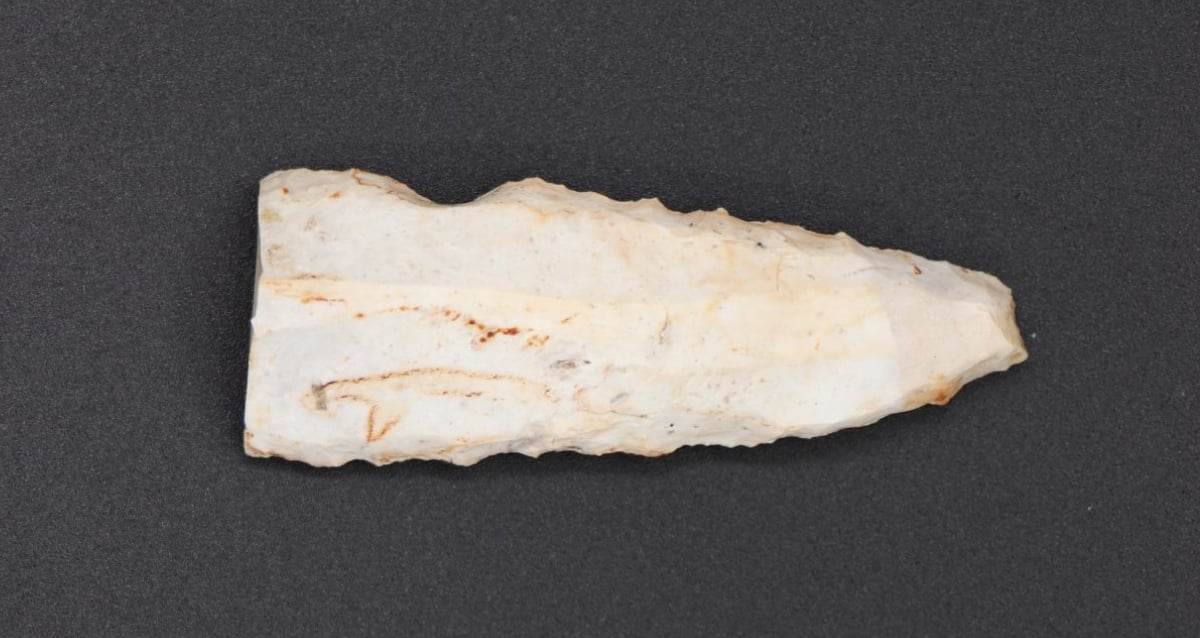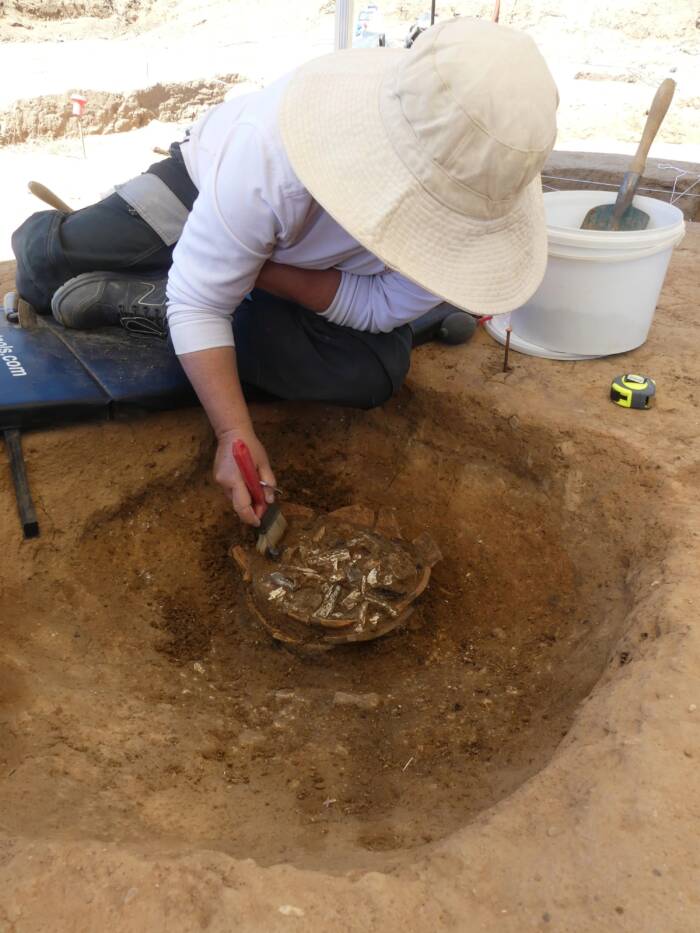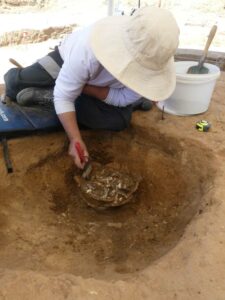Mysterious 4,500-Year-Old Flint Blade Unearthed by Amateur Archaeologists in Northern Germany Sparks New Questions About Ancient Life
Who knew that a casual stroll through a construction site in Altenberge could turn into a time-traveling adventure? Imagine tripping over a 4,500-year-old flint blade, intact and boasting no missing shards—practically the archaeological equivalent of finding a vintage vinyl untouched in a dusty attic. This rare relic, plucked from the clay-heavy soils where usually nothing but mud survives, offers a stunning peek into a world long vanished at the cusp of the Neolithic and Metal Ages. But wait, what’s even wilder is the discovery of arrowhead production scraps that predate the blade by thousands of years—talk about layers of history quite literally underfoot! Isn’t it fascinating how our modern world keeps gifting us glimpses of ancient lives, tucked away beneath our very feet? Dive in to uncover how this unexpected find joins a series of extraordinary Bronze Age artifacts stealing the spotlight across Germany and beyond. LEARN MORE
While searching a construction area in Altenberge, hobbyists found a rare blade from the Bronze Age that remains surprisingly intact, with no significant pieces missing.
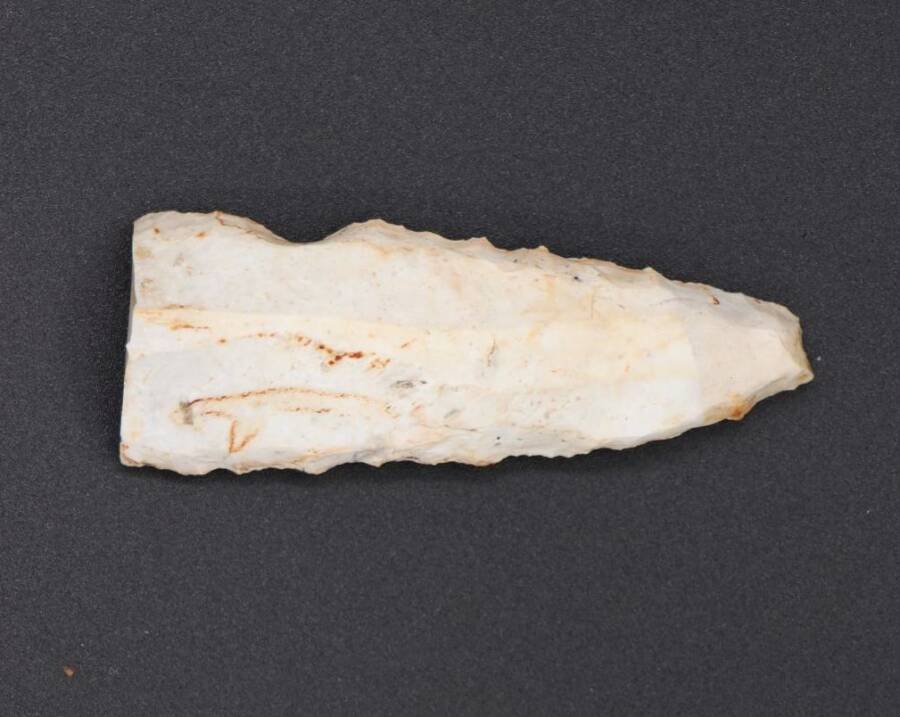
S. Rzitki/LWLArtifacts usually don’t survive in the region’s clay-heavy soil, but thankfully, this Bronze Age blade did.
Archaeologists in Altenberge, Germany recently unearthed a piece of a 4,500-year-old flint blade as well as residue from arrowhead production that could be as much as 5,000 years older than that.
Experts say the discovery is a rarity for the Münsterland region, which has clay-heavy soil that keeps artifacts from surviving intact. Thus there are very few Bronze Age archaeological sites in the region, making this find all the more remarkable.
The Rare Bronze Age Blade Made Of Flint Found In Germany
Archaeologists from the Regional Association of Westphalia-Lippe (LWL) announced the discovery, noting that their staff were utterly shocked when first presented with the find.
Amateur archaeologists were exploring access roads in a development area on Bahnhofsstraße in Altenberge when they made several discoveries. The most fascinating, however, was the flint blade. The hobbyists then presented their find to LWL experts, who dated the fragment to roughly 4,500 years ago, placing it near the end of the Neolithic period and the beginning of the Metal Age in Central Europe.
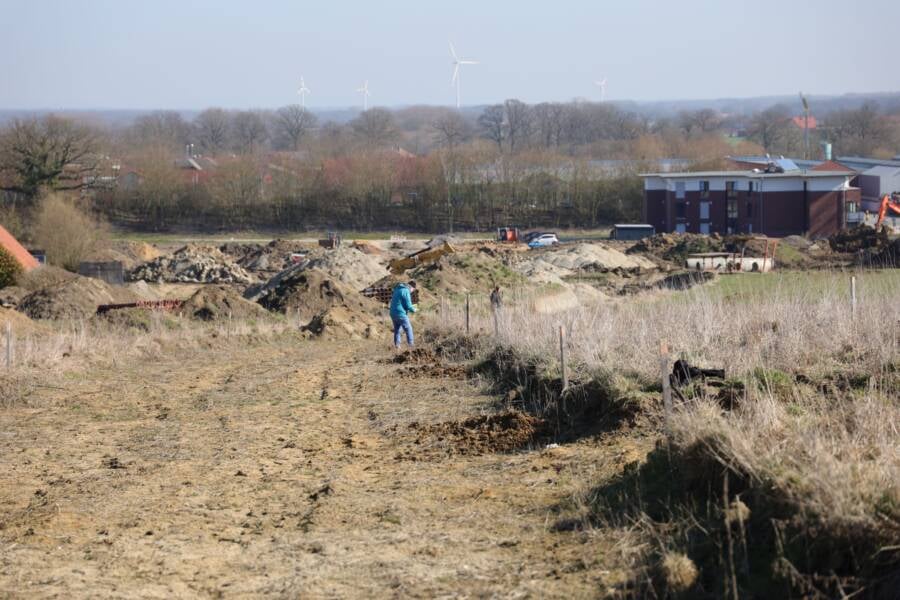
C. Hentzelt/LWLThe site in Altenberge where the flint blade and arrowhead traces were found.
Curiously, the other finds made at the site fall far outside of this era.
One of those other finds was later revealed to be scrap from the production of small arrowheads. This residue was even older, dating back to the Middle Stone Age, which lasted from 9650 to 4900 B.C.E.
When experts investigated the area, they noticed signs that the layer of earth where the finds were made had been “severely” disturbed by long-term cultivation at the site. Unfortunately, this led them to determine that further large-scale excavation would not be worth the effort, though they didn’t rule out the possibility of more individual finds being made.
But while this discovery may have been rare for the Münsterland region, it does recall similar recent discoveries from elsewhere nearby.
3,000-Year-Old Bronze Age Daggers Found In A German Cornfield

Stade District/Christian SchmidtOne of the Bronze Age daggers found in Kutenholz.
In March 2025, researchers from the University of Hamburg announced the discovery of some of the earliest Bronze Age artifacts ever found in the region of Kutenholz, Lower Saxony. There, in a cornfield, they found two well-preserved daggers from the Bronze Age, which offered unique new insight into the ritual practices of ancient communities that once inhabited the region.
As Archaeology News reported, researchers were first clued in about the potential for discovery after a metal detectorist found bronze pieces in the field back in 2017.
Then, in 2023, University of Hamburg researchers began conducting geomagnetic surveys of the field. This process allowed them to detect any subsurface anomalies without needing to dig. When they detected two large buried objects in the field, it prompted them to whip out the shovels.
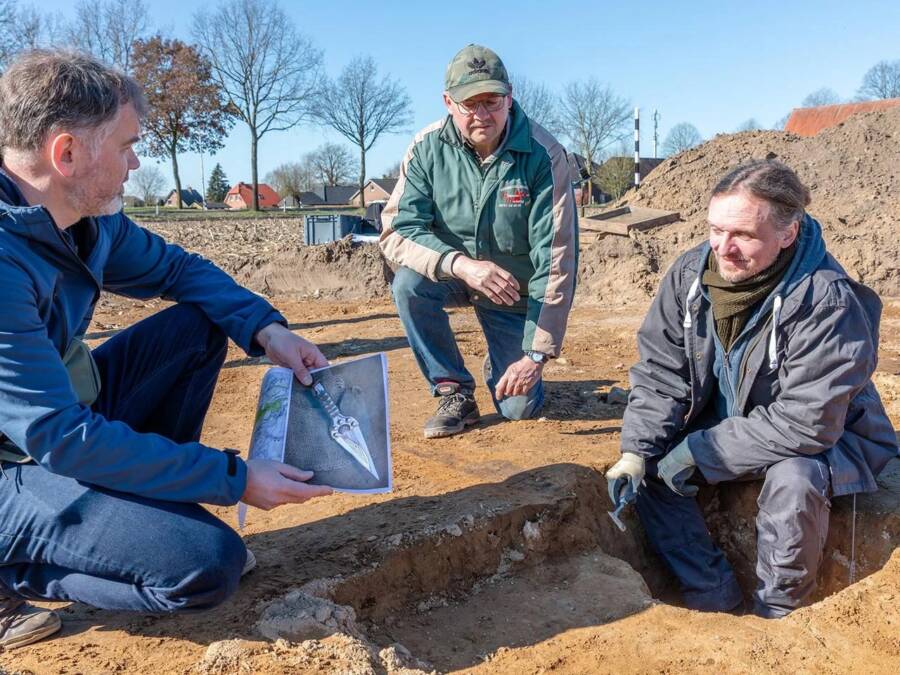
Stade District/Christian SchmidtResearchers at the dig site, holding a photograph of what the daggers may have once looked like.
Buried at a depth of about 11 inches were the daggers, which remained in shockingly good condition given how long the field had been used for agricultural purposes.
District archaeologist Daniel Nösler thus called the discovery a “stroke of luck.”
The daggers were made of bronze and dated to around 1500 B.C.E., roughly the same time as the famous Nebra Sky Disk. Though they had long decayed, experts said the blades were most likely once attached to wooden handles. Moreover, they determined that the blades “likely had ritual significance with a religious or ideological background.”
And in 2024, in neighboring Poland, another stone blade of almost the exact same vintage as the Münsterland blade was found in a raspberry patch.
